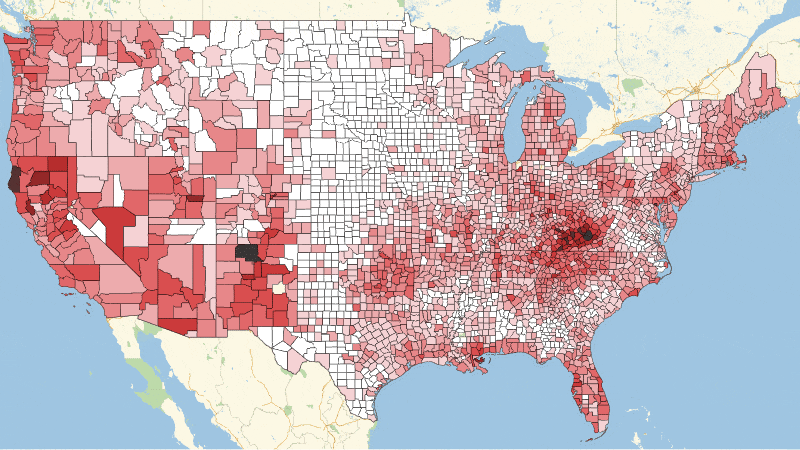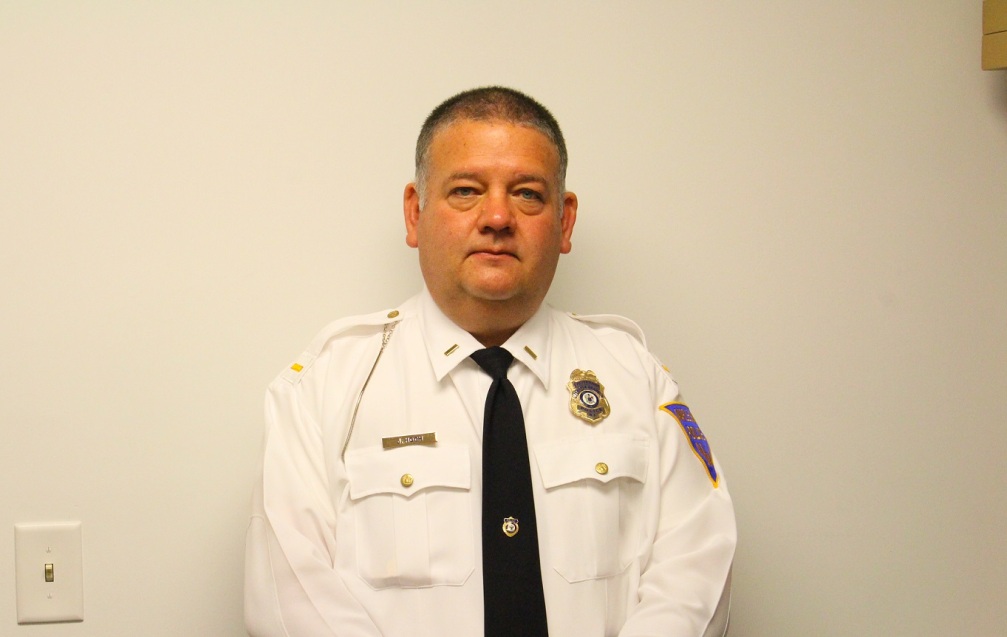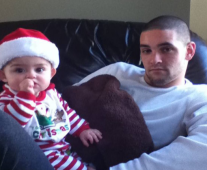By Brian Mahoney, Michelle Campbell, & Stephen Harrison | Rowan University Online Journalism II
Alice Silverman was rifling through her son’s clothing drawers looking for something that might fit his childhood friend Ryan, who had been kicked out of his house and needed a place to stay. She had suspected that her son, Danny, had been using drugs for some time now. Her assumption was that he was into the normal stuff, weed and booze, like she had when she was younger, but she was stunned to discover needles and other heroin paraphernalia tucked away in his sock drawer.
Caught off guard and desperately lacking the resources needed to combat the addiction, Danny eventually succumbed when he overdosed on a batch of heroin laced with the exceptionally potent opiate Fentanyl. He was only 19 when he died on October 20th, 2006.
“I don’t really feel like the parents in this town were pro-active back then… maybe they talked to their kids at home, I don’t know, but as far as going to things at night to educate themselves more about, they might think they know it all but they really don’t. Because as kids get older they just get smarter. Generations go by and they come up with more and more technology, it helps them hide things that are… You know we didn’t have cell phones back in the ‘70s.”
The Problem

Heroin with two forms of paraphernalia: a spoon and a needle (Photo/ Medscape)
The abuse and addiction to opioid drugs such as heroin is a global issue that has a negative impact on the health, social, and economic welfare of all communities. About 36 million people abuse opioids worldwide and 2.1 million people from the United States suffer from substance abuse disorders relating to opioid pain relievers. The catastrophic effects of abuse and overdose has continued to rise. According to the National Institute on Drug Abuse, “the number of unintentional overdose deaths from prescription pain relievers has soared in the United States, more than quadrupling since 1999.”
Opiates are drugs processed from morphine and extracted from certain poppy plants. Heroin, one of the most popular opiates, comes in a white or brownish powder. It’s street names include Big H, Black Tar, Chiva, Hell Dust, Horse, Negra, Smack, and Thunder. Heroin can be injected, smoked, or sniffed/snorted. Heroin is highly addictive. Its initial surge of euphoria is followed by a twilight state of “sleep and wakefulness.” According to JustThinkTwice.gov, physical symptoms of use include: drowsiness, respiratory depression, constricted pupils, nausea, a warm flushing of the skin, dry mouth, and heavy extremities. If a user is unaware how much actual heroin is being used, it creates a very high risk of overdose. Overdose symptoms include slow and shallow breathing, blue lips and fingernails, clammy skin, convulsions, coma, and possible death.
The Statistics
Maple Shade, New Jersey
With a population of just over 19,000 people, there have been forty-seven heroin admissions and eighteen other opiate admissions to New Jersey substance abuse treatment facilities since 2010.

Source: NJ Division of Addiction Service
New Jersey as a Whole
There have been 5,217 heroin-related deaths recorded in New Jersey since 2004.

Source: NJ.com | Herointown, NJ
The heroin death-rate in New Jersey (per 100,000) is 8.3%, more than three times the national average. Heroin fatalities now eclipse homicide, suicide, car accidents and AIDS as a cause of death in the state, according to an analysis by NJ Advance Media.

Source: NJ.com | Herointown, NJ
In New Jersey, there have been 184,038 patients admitted to New Jersey substance abuse treatment facilities for heroin or opioid abuse since 2010. There have been 781 heroin-related deaths in New Jersey in 2014, the fourth straight year the state saw an increase.

The United States as a Whole
The United States has seen a steady increase in heroin use. The number of deaths from prescription opioid pain relievers in 2014 is up more than three times the amount in 2001.



Timelapse 1999-2014: Age-adjusted death rates for drug overdoses per 100,000 population by county and year (Source: data.cdc.gov)
Law-Enforcement

Lieutenant Jeffrey Hoch of the Maple Shade Police Department (Photo/ Stephen Harrison)
Lt. Jeffrey Hoch of the Maple Shade police department serves as the forces PIO, or public information officer. As a law enforcement agent, he sees the havoc that opiate use can wreak upon a family and the community at large.
“The financial need to support the habit drives the user to commit mostly property crimes to purchase their drugs. We kind of see it start out in stages, initially they’ll start stealing from family members, stealing things that are easy to dispose of which typically is jewelry, going to gold places, so on and so forth. Some then progress once they’re done stealing from their family. Like I said, it progresses in stages, after stealing from the family… they may graduate into stealing low level stuff, you know, milling around at night and going through unlocked cars and stealing items, stealing change, stealing GPS’s, phones from cars, and again things that they can go to places in the cities and trade in quickly for money, and the money is quickly turned into drugs… and then as things progress, and if they still don’t get arrested or someone still doesn’t avert them from the life of drugs then they get into more serious crimes… So we have seen families escalate to that and it’s terrible.”
While new medical devices such as Narcan are proven lifesavers, Lt. Hoch has some ambivalence about them.
“It’s kind of a… we talk about the overdose prevention act and all the good reasons that it’s in play, but the fact that people don’t get charged criminally, there might be some statistics, I don’t know, that would show that that’s a bad thing… If fear of incarceration or fear of monetary fine is what drives somebody to not do something again, we’ve removed that… but again, the important thing is to save lives.”
“Whatever we can do to mitigate it, whether it’s through education or through enforcement, either one the end goal is the same, it is to mitigate the problem.
The Users

Andrew J. Powell, 23, of Maple Shade (Photo/ South Jersey Times)
Andrew J. Powell was a resident of Maple Shade all his life. He was employed as a mechanic for Tolls Brothers in Morrisville, PA. On January 29, 2012, Powell passed away suddenly due to an overdose on heroin.

Adam Bush, 30, of Maple Shade (Photo/ SJ Magazine)
Adam Bush struggled with addiction for at least 10 years including several stints in rehab, who overdosed in 2015. According to the Adam Bush Memorial Fund, if you ever encountered Adam, you were instantly drawn to him. “He would instantly light up a room with his smile and immediately make you a friend with his infectious charisma.”
At a candlelight vigil held on August 31, 2016 in Washington Township for International Overdose Awareness Day, Adam’s mother, Michelle Bush said, “No one makes a choice to become an addict. This is a disease. They are normal people. They are our sons, daughters and husbands and wives.”
The Affected

Alice Silverman, active advocate for drug policy reform and education, lost her son to an overdose in 2006 (Photo/ Stephen Harrison)
Heroin doesn’t just affect the user. It affects the family and friends of the user as well as first-responders. Alice Silverman lost a son to opiate abuse in 2006, and the problem has not gone away for Maple Shade.
“As crazy as this sounds I feel like it’s more normal for your kid to have a drug problem than for your kid to not have a drug problem, because there’s so many kids doing it. We have an epidemic going on right now, it’s not just one kid on the block. I could drive you around this whole town and I could take out my sons and my daughter’s high school yearbooks and tell you which kids are dead, which kids are still using, which kids have recovered, which kids are in jail… It’s just crazy.”
Due to the ease with which public transportation in Maple Shade can get to popular drug buying hotspots in Camden and Philadelphia, people from surrounding communities take advantage of this.
“We’ve had kids from Moorestown, my son told me, and they would park here and they would give the kids from Maple Shade money to go to Camden for them, and they’d throw them money to get their own stuff.”
Silverman remains an active advocate for drug policy reform and education, and was among the activists who challenged Chris Christie to pass the Good Samaritan Emergency Response Act and Overdose Prevention Act.
The “Solutions”
In May of 2013, Governor Chris Christie signed into legislation laws that shield people from negative repercussions from the law when they call for medical help in cases dealing with illegal drug abuse.
The Overdose Prevention Act allows people to call for medical help if they witness, or are experiencing a drug overdose, without the fear of being arrested. Pharmacists or doctors who administer “opiate antidote” to people in emergency situations are also protected from prosecution.
The Good Samaritan Emergency Response Act works quite similarly. Individuals who call for emergency help when someone is overdosing will not be held liable for drug use or possession charges. These laws help combat the cases that go unreported and individuals left alone during overdose episodes due to the fear of the law.
 Narcan Nasal Spray is the first FDA approved nasal spray life-saving medication that can stop or even reverse the effects of an opioid drug overdose. Narcan is to administered right away at the signs of a drug overdose. This medication is a prescription product, however, there are many states where an individual can purchase Narcan straight from a pharmacist without an individual prescription. This medication does not take the place of emergency medical care and 911 should still be called after administering the spray. Naloxone only used to be offered in injectable forms through a syringe or autoinjector. According to the U.S. Food and Drug Administration’s press release, first responders and caregivers think the nasal spray is easier to use and “people have access to an FDA-approved product for which the drug and its delivery device have met the FDA’s high standards for safety, efficacy and quality.”
Narcan Nasal Spray is the first FDA approved nasal spray life-saving medication that can stop or even reverse the effects of an opioid drug overdose. Narcan is to administered right away at the signs of a drug overdose. This medication is a prescription product, however, there are many states where an individual can purchase Narcan straight from a pharmacist without an individual prescription. This medication does not take the place of emergency medical care and 911 should still be called after administering the spray. Naloxone only used to be offered in injectable forms through a syringe or autoinjector. According to the U.S. Food and Drug Administration’s press release, first responders and caregivers think the nasal spray is easier to use and “people have access to an FDA-approved product for which the drug and its delivery device have met the FDA’s high standards for safety, efficacy and quality.”
Looking Forward
The explosion of opiate use nationwide is not a problem that is unique to Maple Shade, but it is a community that has been hit hard due to the ease with which the drugs can be accessed. Advocates such as Alice Silverman and law enforcement officers such as Lt. Jeffrey Hoch look at the problem from different perspectives, but they both agree that the bottom line is to mitigate the use of opiates and to save lives. A chaplain corps has been organized by the police in an effort to provide counseling and prevention. Alice Silverman has helped Narcan become available within schools and helps provide training in its use. But even Narcan may not be enough when heroin or other opiates are laced with dangerous additives such as Fentanyl, or the newly discovered U-47700, which is a synthetic opioid seven and a half times more powerful than morphine.
Alice Silverman sometimes walks through the graveyard where her son is buried, and has noticed a trend. Newer headstones tend to be black, like her sons, and she’s noticed that their prevalence has been increasing. She suspects that those headstones too belong to young Maple Shade residents whose lives have been cut short.
If you or someone you know are addicted to heroin or opiates, please call Your First Step at 1-855-211-7837 or Addiction Center Philadelphia at (877) 273-5741.
